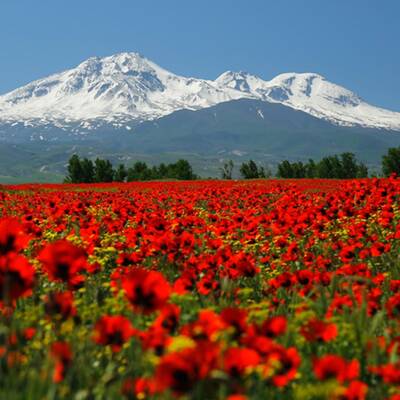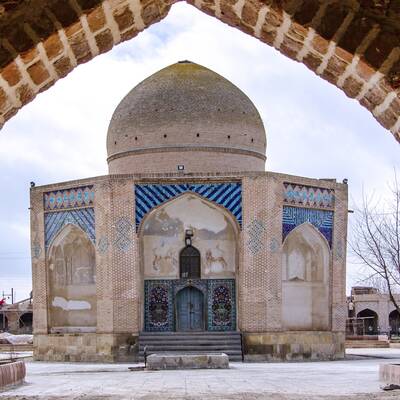Bazaar of Ardabil is a reminiscence from the thirteenth century, Seljuk dynasty. This complex which is included in the list of the national heritage of Iran is located in the central area of the city Ardabil.
The main part of bazaar is located between six important passages of the city. They are Tabar, Uchdukan, Pir Abd-ol Malek, Gazrun, Sar Cheshmeh, and Ali Qapu. Ardabil is an ancient city that is formed around the element of bazaar. The six passages surrounding it have evenly spread throughout the city, from the Sheikh Safi al-Din Khānegāh and Shrine Ensemble and Ali Qapu square in west south to Jom’eh Masjed or Jome Mosque in east north.
More or less, Ardabil has been considered as one of the biggest cities in the northwest of Iran. As a result of trading relations between Iran and Russia, it became more popular and prospered during the Safavid dynasty in fourteenth and fifteenth century, a process that continued during Afshar and Zand dynasties. The main building of bazaar was formed by some restorations during Safavid and Zand eras that were conducted on a construction from Seljuk era. After the end of Qajar, the city spread and more streets were built, which resulted in the destruction of its historical texture. What remains today does not resemble the historic structure of Ardabil in the way it did in the past.
The historiographical texts have depicted Bazaar of Ardabil as a cross structure with a mosque in its center. This traditional market consists of both roofed and unroofed spaces decorated with brickworks, vaults, blind arches on the sides, pillars, domes and similar techniques. The blind arches are about three meters wide and the thickness of the base of the pillars is less than one meters.
Aside from bathhouses and mosques, the main part of Bazaar of Ardabil is a Chaharsuq named Qeisarieh, an intersection of two passages. It is a small square with a width of thirteen meters. Positioned thirteen meters higher, a dome is built over a set of twelve pillars with twelve pointed barrel vaults. Qeisarieh has four pathways that lead to the markets.
Pathways, Timcheh (a group of markets selling the same type of products) and small markets were located inside and outside of Bazaar of Ardabil, such as bazaars of groceries, butchers, woodturners, leather makers, knife sellers, hat makers, shoemakers, gold shops, cotton shops, blacksmiths or bazaars of Pir Abd-ol Malek, Golshan, Vakil, Zanjirlu, Haj Ahmad, Haj Shekar, Majidiyeh, Emam Jom’eh and Dogachi. There is a stone relief on the eastern gateway that probably contains the name and description of the builder of bazaar but unfortunately, it is not readable today.



.jpg)

